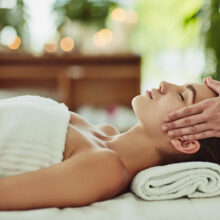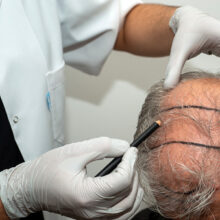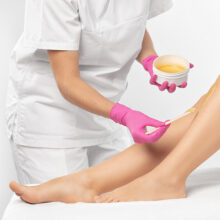Rosacea Awareness Month: What Causes Rosacea?
- Published: Tuesday, April 26th 2011
- in Beauty
 Do you have sensitive skin that gets red to the touch and infuriates you as much as it makes you look infuriated? Then you might be one in 20 people in the U.S. that have rosacea. It can be frustrating not to have control over your skin, and even more frustrating that there is no clear-cut explanation for it, which also means no clear-cut treatment to get rid of it. Rosacea is being talked about more and more and with April being Rosacea Awareness Month, we thought we’d take a look at the basics of the skin condition.
Do you have sensitive skin that gets red to the touch and infuriates you as much as it makes you look infuriated? Then you might be one in 20 people in the U.S. that have rosacea. It can be frustrating not to have control over your skin, and even more frustrating that there is no clear-cut explanation for it, which also means no clear-cut treatment to get rid of it. Rosacea is being talked about more and more and with April being Rosacea Awareness Month, we thought we’d take a look at the basics of the skin condition.
“Rosacea is a difficult-to-define and still-evolving skin disease that is commonly associated in the public mind with red, thick, veiny noses, called rhinophyma,” said Jessica J. Krant, M.D., M.P.H., Assistant Clinical Professor of Dermatology at the SUNY Downstate Medical Center, New York, and founder of Art of Dermatology, LLC, a private practice in Manhattan.
“This is an extreme end-case scenario of what might happen with a few patients with uncontrolled rosacea and less common skin types, over decades.”
The more common type of rosacea, Krant said, is a flushing redness and outbreak of the nose and cheeks, and sometimes chin, that can be confused with acne, and is difficult to manage.
It is not known what causes rosacea, agreed Rachel Herschenfeld, MD., fellow of the American Academy of Dermatology, and practicing at Dermatology Partners, Inc. in Wellesley, MA. “However, in people with rosacea, a number of factors can make it flare,” she said.
Both Herschenfeld and Krant noted that true rosacea is often triggered by certain foods and drink like alcohol – especially red wine, aged cheeses, nuts, and spicy foods, and also with heat and exercise, emotional stress, and irritating skin creams. Avoiding these triggers can go a long way to help prevent the worsening of rosacea over time.
Rosacea by the Numbers
Rosacea is more common in women than men. A Swedish study took a random sample of 809 clerical workers and found that 14% of women & only 5% of men had rosacea. Rosacea is also more common in women experiencing the menopause than those who are not, with approximately half of people with rosacea being between the ages of 30 and 60.
Treatment Options
In addition to spotting and avoiding triggers, Herschenfeld suggests using one or a combination of several available treatments like topical antibiotics, topical sulfa preparations, topical retinoids, or oral antibiotics.
Krant agreed.
“Treatments that sometimes work to help manage rosacea include topical antibiotics similar to acne treatments, oral niacinamide tablets, or low dose oral antibiotics,” she said.
“For the persistent red flush or expanded facial blood vessels associated, sometimes light-based treatments like laser or broadband light/IPL can help ‘turn back the clock’ and remove some accumulated redness.”
Proper Diagnosis
One of the most important parts of the treatment of rosacea, however, is proper diagnosis.
“Many people are told they have rosacea when in fact, they have something else entirely,” Krant advised. “See your well-qualified board certified dermatologist for help, and if not satisfied, seek a second opinion!”


